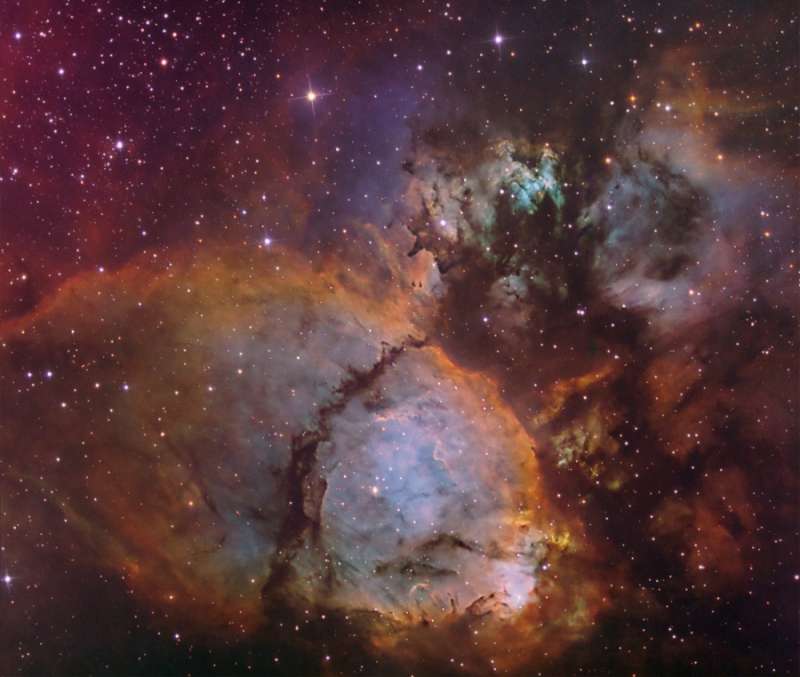Credit & Copyright: Don Goldman
Explanation:
This colorful cosmic portrait
features
glowing gas
and dark dust clouds in IC 1795,
a star forming region in the northern constellation Cassiopeia.
The nebula's colors were created by adopting the
Hubble false-color palette
for mapping narrow emission from oxygen, hydrogen,
and sulfur atoms to blue, green and red colors, and further
blending the data with images of the region recorded through
broadband filters.
Not far on the sky from the famous Double Star
Cluster in Perseus, IC 1795 is itself located next to IC 1805,
the Heart Nebula, as part of a
complex
of star forming regions that lie
at the edge of a large molecular cloud.
Located just over 6,000 light-years away, the larger
star forming complex sprawls along the Perseus spiral arm of
our Milky Way Galaxy.
At that distance, this picture would span about 70 light-years
across IC 1795.
1999 2000 2001 2002 2003 2004 2005 2006 2007 2008 2009 2010 2011 2012 2013 2014 2015 2016 2017 2018 2019 2020 2021 2022 2023 2024 2025 |
Yanvar' Fevral' Mart Aprel' Mai Iyun' Iyul' Avgust Sentyabr' Oktyabr' Noyabr' Dekabr' |
NASA Web Site Statements, Warnings, and Disclaimers
NASA Official: Jay Norris. Specific rights apply.
A service of: LHEA at NASA / GSFC
& Michigan Tech. U.
|
Publikacii s klyuchevymi slovami:
star formation - emission nebula - zvezdoobrazovanie - emissionnaya tumannost'
Publikacii so slovami: star formation - emission nebula - zvezdoobrazovanie - emissionnaya tumannost' | |
Sm. takzhe:
Vse publikacii na tu zhe temu >> | |
